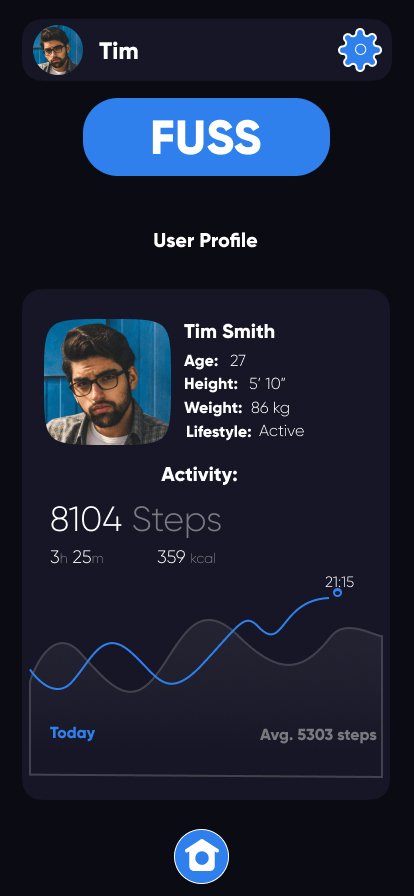
Physical Prototyping with wearable technology
Physical Prototyping
Fuss
Wearable technology, or 'wearables' as they are now known, is the future of fitness tracking in the healthcare industry. Whether training for a marathon or ensuring you have your doctor's recommended steps in for the day, fitness trackers have shifted from luxury items to essentials.
We prototyped a wellness jacket called FUSS (the Hungarian word for running) that provides the wearer with information about their skin temperature, the outside temperature, heart rate, and breathing rate. They can also initiate a blood pressure test and sync the jacket with a smartphone to receive text messages and answer incoming calls.
Design Approach
The jacket (wearable) was designed with the idea that the interface would be accessible and independent. We chose to utilize a separate application on a mobile device that would sync with the wearable instead of having a display on the wearable itself.
The application is the display of the wearable; it shows the user their biometric data and can initiate any tests they would like to perform. It allows users to customize layouts and information and change settings and features.
The wearable can be synced with various devices (such as smartphones or smart watches) for athletes and serious fitness trackers who prefer to track their everyday progress. However, the simplistic approach to the application design makes it easy to use for people who want basic biometric tracking.
physical prototypes
Alpha Wearable - Loosely sewn prototype using inexpensive fabric to demonstrate concept.
Beta Wearable -A more refined design that uses wicking fabric, elastic, and sewn-on usable features.
Fuss User Interface
Prototype Feedback
“This is cool!! With runners we focus on breathability and lightweight materials along with moisture-wicking and temperature control.”
— Nathan (a long-distance runner and Junior at Drexel University)
“I love the concept of this jacket, and I think it would be helpful for many people, especially those who are 40 years +, and anyone that needs to monitor their heart rate. I love the one-time synchronization, too, kind of like with headphones; you only have to sync them once, and it works. A suggestion is, what if when you zip up the jacket it automatically engages through the action of zipping up instead of pressing the logo? I think that would be cool."
— Josie (a track and field athlete)
Demonstration
CONSIDERATIONS & Reflections
The fabric was challenging as it should be resistant to weather conditions and lightweight and breathable for the user who intends to use it for longer. The first physical prototype uses a denser, fleece-like fabric for colder weather. The second prototype was created based on the feedback received on the first one.
Fabric
The initial idea was to go for a display that makes the jacket an independent wearable, but the choice to add the app made the jacket more accessible. The assumption was that most users are familiar with apps (separate from a mobile device or linked to a mobile device), making the app interface easy to learn.
Display
There is a potential for linking the prototype to other bio trackers for users that want more detailed health and body tracking.
Syncing
Some elements were too small to observe, especially if you're looking at it while moving around. A second iteration of the prototype design should ensure app elements are more significant.
Application
While doing this prototype, we took a design-focused approach and approached it from a marketing/advertising perspective. It was challenging to develop something that seemed like a competitor to giants like FitBit and Garmin yet unique. In addition to learning about and researching wearable technology, we also had to research fashion and fabric design, as no member had a background in this sector.







